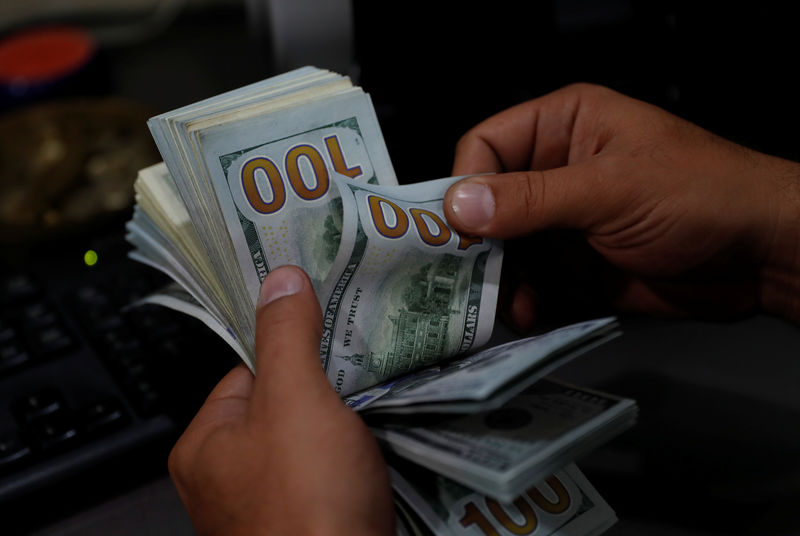By Tom Finn
LONDON (Reuters) - The dollar edged toward a 10-week high on Friday before monthly U.S. jobs data that investors hope will shed light on how much longer the Fed's aggressive rate-hiking cycle will continue.
The greenback is outperforming other major currencies as the U.S. economy continues to grows strongly while recent data in other large economies, including the euro zone, has come in below expectations.
Investors are watching for signs of increasing U.S. inflation as companies including Amazon (NASDAQ:AMZN) AMZN.O raise minimum wages. Friday's non-farm payrolls release for September will give new indications of wage growth and labor market strength.
The dollar index .DXY, which measures its performance against a basket of six currencies, was 0.1 percent higher on the day at 95.804.
Private payrolls data came in stronger than forecast on Thursday, pushing the yield on the benchmark 10-year U.S. Treasury note US10YT=RR to its highest levels since May 2011.
"We have downplayed the relevance of the U.S. labor market report for the dollar ... but the data might become more significant again now there is debate over how much longer the (Fed) rate hike cycle will continue," said Antje Praefcke, a currency strategist at Commerzbank (DE:CBKG) in Frankfurt.
The U.S. central bank foresees another interest rate hike in December, three more next year, and one increase in 2020.
Fed Chairman Jerome Powell on Wednesday talked up the U.S. economy, saying that the United States is on the verge of a "historically rare" era of ultra-low unemployment and tame prices. (Full Story)
That spooked investors and caused U.S. Treasury yields and the euro/dollar currency pair to breach key technical levels.
AUSSIE FALLS TO MULTI-YEAR LOW
The Australian dollar AUD=D4, often viewed as a barometer of risk appetite, slipped 0.3 percent to $0.7054, a 32-month low, as U.S. yield spreads continued to widen, pressuring stock markets and risk appetite around the world.
The Aussie, extending losses into a fourth straight session, has now fallen 2.1 percent this month.
The euro EUR=EBS edged down 0.1 percent to $1.1497 after brushing a six-week low of $1.1463 during Thursday's session.
The dollar will continue to strengthen against the euro as well as the yen, with the common currency likely slipping back below the psychologically-significant $1.15 handle, said Yukio Ishizuki, senior currency strategist at Daiwa Securities.
The euro is down about 0.8 percent against the dollar this month.
Sterling rose to a 3-month high versus the euro on Friday after European Union Brexit negotiators said that a divorce deal with Britain was "very close".
The pound rose to 88.14 pence EURGBP=D3, its highest since 9 July, on the report which cited two diplomatic sources.
